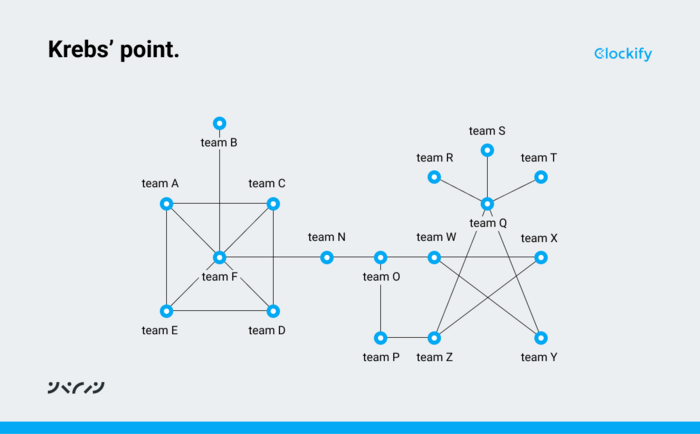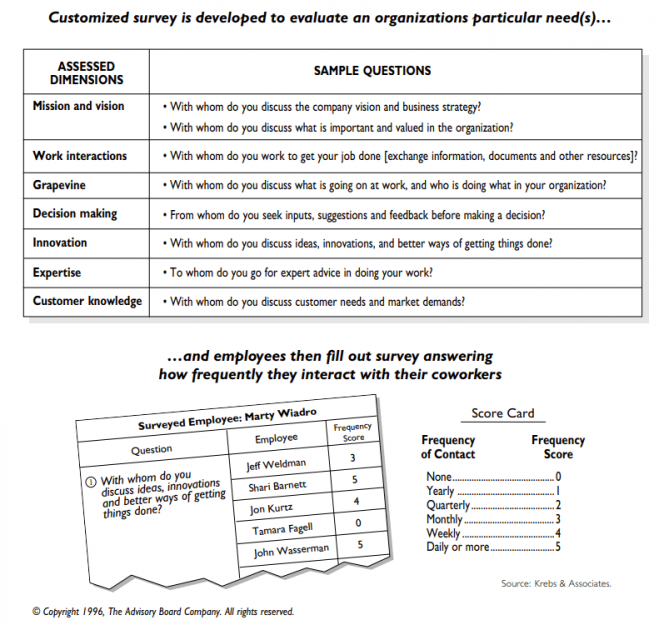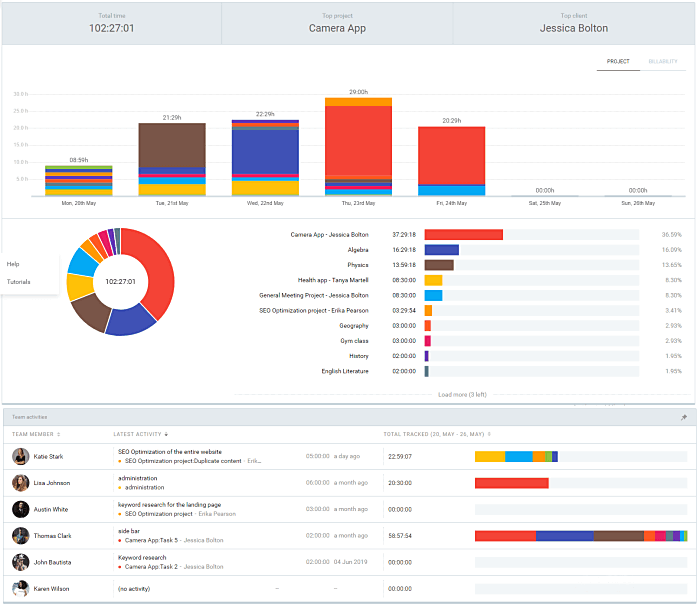A connected team is a powerful driving force any business can have. In fact, it is not even that difficult to achieve, even though it requires a little work and some resourcefulness.
With the rise of remote and hybrid work models, establishing real connections in the modern workplace is even more challenging for both managers and employees.
It requires a lot of understanding of how coworkers connect with each other, and what that means for the company. Moreover, managers should lead by example and help their employees form connections that last.
This article will cover:
- What team connectivity is,
- What the main benefits of connected teams are,
- How human and social capital play into connectivity, and
- Practical advice, tips, and tricks on how to foster team connectivity.
Let’s dive right in.
What is team connectivity?
In business, the term team connectivity stands for team members:
- Being in sync,
- Having the appropriate communication channels and knowledge bases,
- Being open-minded and open to feedback, including constructive criticism, and
- Having the capacity to communicate openly and honestly.
Well-connected teams can be the key to success, but fostering team connectivity can mean different things.
First, supporting employee connections should be an ongoing and never-ending process that must be highly personalized.
Even though a bulletproof way to improve connection in the workplace doesn’t exist, good practice examples do — i.e.:
- Establishing an inclusive company culture,
- Encouraging informal meetings,
- Giving employees a voice,
- Responding to employees’ feedback,
- Organizing informal gatherings, team-building activities, etc.
With the rise of remote work and distributed teams, many focused purely on the choice of an adequate communication tool, hoping the tool itself would bridge the gap.
Of course, establishing the right communication channels is essential — but providing proper tools and then letting employees “naturally” seek each other out may not be enough.
Well, as it turns out, most will need a little help from their managers and team leads when it comes to maintaining a connection with the team.
Now, HR departments and agencies have long been scrambling for answers on how to help employees feel connected.
After all, a cohesive network of connected employees with different knowledge and skills will push a company forward.
💡 Clockify Pro Tip
Want to learn more about building team time management and further improving it? Check out this guide:
How the modern workplace is a network of teams
The impact of all things digital has been immense on the global market. Innovative solutions and rapid changes to hierarchical business models are completely deconstructing the traditional way of work.
In an article for Forbes magazine, Josh Bersin wrote about the “networks of teams”, a relatively recent phenomenon born from the digital workplace.
He discussed how businesses nowadays operate in teams, rather than through a hierarchy of departments.
Here is one such famous example.
The networks of teams example: Uber
Bersin gives the example of Uber, so let’s check out how this business conglomerate leverages the power of teams.
The company’s higher-ups don’t get involved with each state and city down to the most minute detail. In each city, they have managers who form networks of marketing agencies, operation leaders, local business partners, etc.
Each management network works independently — but communicates and shares information with others.
IT companies work in much the same way. Each department is equally important, and none of them is above the other.
This is what Bersin believes brought on the disruption in the way work is organized.
Without imposed hierarchy, he asks, how do we streamline people and have them listen to each other, talk, and share the collective resources?
The secret lies in forming these networks of teams — teams connected in a way that makes them productive and efficient, while also helping their personal career development.
To achieve this goal, it’s vital to build a work environment tailored to encourage honesty — not only with peers but with superiors as well.
The benefits of team connectivity in the workplace
We’d like to argue that good connections elevate both those connected and the company they work for.
Here’s how.
Benefits of team connectivity for the company
When a team enjoys good connectedness, the company reaps benefits in:
- More streamlined communication,
- Innovation,
- Faster, more creative problem-solving,
- Improved team coordination,
- Less wasted time,
- Increased overall job satisfaction, and
- Fewer turnovers.
Benefits of team connectivity for employees
With improved team connection, employees:
- Gain new skills,
- Improve communication skills,
- Achieve greater job satisfaction,
- Have a better chance at a career advancement,
- Are less likely to burn out, and
- Are more likely to develop new friendships outside of work.
What makes a good team connection?
What does “good” connectivity even mean?
Is it when people within teams and between teams have good chemistry, so they get more work done?
Is it enhanced efficiency, better office communication, or something entirely different?
Well, the connection between two employees or teams has potential if it checks off these 3 boxes:
- It benefits the parties involved,
- It helps the managers streamline and coordinate, and
- It brings value to the company.
Leave out any of the three, and the connection can’t be seen as “good”.
But, before you start connecting teams, you want to make sure that the teams themselves function properly.
Otherwise, they fall apart before you even begin connecting them.
💡 Clockify Pro Tip
Interested in further reading on teamwork and team management topics? Check out these guides on team development and maintenance:
Now, let’s see what you can do to make team connections that matter.
What makes connected teams work? And what makes them fail?
In this section, we’ll dive into the key aspects of good team connectivity and how you can use that knowledge in practice.
First, to know how to connect your teams in a valuable, beneficial way, you need to understand the importance of human capital and social capital.
Human capital is the economic value an employee brings to the table with their skills, knowledge, and education. We hire and promote people based on their human capital. We assign them projects, tasks, and clients with this value in mind.
Managers invest in human capital by providing books and resources, sending employees to conferences, courses, and so on.
But, as a value, human capital is just one part of the equation.
By knowing the skill sets, strengths, and weaknesses of your employees, you can make a more informed decision on who will be the other part of the equation.
Social capital is the value brought on by connected employees — their joint effectiveness, pooling of resources, skills, and knowledge.
Within a company, positive social capital makes for effective teams when members:
- Communicate better and clearer,
- Share the same values, methods, goals,
- Are more effective and productive,
- Are more motivated to work, etc.
So, to get good social capital, you need to have experienced, skilled individuals connected in the most compatible way.
💡 Clockify Pro Tip
Want to read a detailed guide to learn how to accurately assess each employee’s skills, productivity, and efficiency? We’ve got you covered, check this out:
The benefits of when social and human capital work together
A clear case can be made for our argument on human and social capital as the two pillars of team connectivity.
In his paper titled Managing the Connected Organization, organizational network expert Valdis E. Krebs listed a few simple examples of the role human and social capital play in helping teams connect:
- For project managers, social capital is integral in improving their effectiveness on a project. With a better network inside and outside the company, they are able to gather enough knowledge to get the job done quicker or solve problems more easily.
- For teams, being directly or indirectly connected with different project teams can get them the information or skills they need. Good connections within a team form a knowledge base that works in one specific area. But connections with other teams (directly or indirectly) will give teams the opportunity to transfer that knowledge, adopt new skills, and reach information faster.
Why interdepartmental connections are usually weak
However, Krebs adds that in most cases, organizations have very poor networks.
As people begin to work on projects, they do form strong connections and add to the social capital — but to their own team as well.
Connections to other project teams are significantly weaker, if existing at all.
He concludes this becomes a sad reality of teams being unaware of just how much help and resources are at their fingertips.
An employee usually has one or two direct connections. The more connections beyond that, the more they fade away.
For example, John from customer service will have heard about Anna from the design team, but he won’t exactly know or care about her project or skills.
But, should every team member be familiar with every other member of a different team and know what their projects are about?
Simply put — no. The next segment will explain why.
Why the quality of team connections is more important than the quantity
In the same paper, Krebs argues that, even if connections between teams can grow weak, there is no reason to force strong connections between everyone.
A fewer number of direct connections and some indirect connections are much better and easier to handle.
The image below illustrates Krebs’ point.

The graph shows a network of connections between teams on a project.
We may think that team F or team Q have the best connections and the most social capital, as they have access to 5 other teams’ resources.
However, these 5 direct connections make them overburdened with resources.
How?
Team F has direct links to teams A, B, C, D, E, F, and N. They have 1 indirect connection to team O. If they want to reach information from team T…. Well, you see where it gets messy.
In fact, team O is in the best position, with only 3 direct connections. That’s because these 3 connections lead them to resources of the majority of other teams in just 2 steps, where team F needs 4, 5, or more.
You can try it for yourself: which teams need to be connected, for them to need fewer steps to the resource pool?
What does the network of connections teach us?
Again, we conclude that fewer, quality direct connections and several indirect ones lead to more efficient networks.
That means endorsing collaboration and matchmaking employees whose skill sets aren’t the same but complement one another.
And, if you’re wondering how the farthest indirect connections reach one another’s resources, it’s usually through emailing presentations, reports, or previous client/customer experiences.
Even something as simple as a water cooler conversation might work — an employee will potentially share a successful team strategy, which their conversational partner (the indirect connection) will be able to recall and implement in their team’s time of need.
How to make employees feel connected?
To form meaningful connections that will make your company and employees flourish, you’ll need to introduce changes.
No step is too small when it comes to creating functional networks.
We’ll also share a list of dos and don’ts that will come in handy, despite the company’s size or the industry you’re in.
The DOs of fostering team member connections
There are many dimensions and layers of interpersonal connections, especially in the workplace.
And, of course, trust must be earned, but that doesn’t mean the company culture should revolve around micromanagement, to provide an example.
Now, let’s share some good practice examples, more precisely 13 DOs in the form of useful tips.
DO work off of existing connections
Find out who works with whom already, or which social groups they belong to.
Krebs and his associates formulated an excellent survey that explores precisely the types of connections employees have with others.

A survey like this will reveal pre-existing connections, and give you an idea of how the teams work at the moment.
DO analyze your current organization for weak spots or missing links
From the employee survey, you can identify pockets of knowledge that are unused or gaps in communication.
This leads to the process of forming a complex picture of your teams’ interconnectedness and how it can be improved.
Depending on the size of the company, as well as the industry itself, the results can be vastly different.
DO revise, reanalyze, and readapt the network
Follow the connections closely as time goes by. If possible, conduct peer reviews like the one above.
Chances are that despite all the effort, your first network of team connections will be far from ideal.
But practice makes it perfect, so quality leaders should know they ought to embrace change.
DO emphasize the importance of transparency
Naturally, when employees share information about one another’s projects, they will be aware of what is happening company-wide.
However, it’s always good to set up a system where people can freely check what other teams are working on, without the need to contact their coworkers directly.
Project team timesheets are one simple and easy way of establishing a straightforward system.
Not only will team members see how far off the project has progressed, but other teams can find out what their coworkers are working on.
Here’s an example of a Clockify office team timesheet.

Every team member can clearly see who worked on which project and for how long, so there’s no confusion. Once you select a person, all relevant data about their tasks is shown in detail.
Bear in mind, transparency among team members serves another important purpose — employees feel they can freely speak up their minds.
💡 Clockify Pro Tip
Want to streamline your workflow in a better way and boost your employees’ productivity as a consequence? You’ll definitely be interested in this article:
DO streamline the communication channels
Speaking of communication — provide your employees with all the possible channels they may need.
We’ve mentioned that indirect connections communicate mainly through emails, project management platforms, and other tools rather than directly.
Similarly, brainstorming sessions and meetings should follow a schedule and a timeframe. It will help different teams align their internal schedules.
DO try to eliminate, or at least reduce insecurity
This brings us back to human capital: When individuals know how their skills contribute to the team and company, they will feel more secure and confident and form good connections more easily.
Furthermore, teams should know about the company’s goals, values, mission, and where it’s headed in the next five years.
Vagueness often leads to employees experiencing the imposter syndrome phenomenon, which can negatively impact their self-esteem.
If you’re unaware of the phenomenon, it refers to feeling like a fraud at work, i.e. like your success is a result of luck, instead of knowledge, skills, and talents.
DO reward efforts to share skills and knowledge
There is hardly a better way to support employees connecting with each other than by recognizing and rewarding good practices.
Commend them individually and publicly when they share skills and transfer knowledge.
Properly motivating the employees and reminding them that their growth is the company’s growth is essential and directly linked to employee satisfaction.
DO be mindful when you’re switching employees between teams
Your carefully assembled teams may not remain the same for long.
Certain projects may demand employee transfers, or there might be promotions.
When you decide to transfer someone from one team to another, look at how it could affect the entire network.
There could be overlaps that could increase connectivity, but new gaps can form as well.
DO promote healthy ways to manage emotions at work
Even the best-connected teams consist of individuals — and we must all allow ourselves to feel off our game at times.
Sometimes, our personal lives will get in the way of being the most collaborative and productive version of ourselves.
Other times, our crises will be work-related — but whatever the reason behind our feeling emotionally unstable, we must learn to manage our emotions at work.
For example, promote a company culture that encourages expressing emotions. However, to give you a pro tip — be mindful of the goal of sharing, as well as who you are sharing the emotions with.
So, whenever you’re feeling frustration, worry, disappointment, or even anger, here’s what you can try:
- The 10-second rule (a.k.a. recompose yourself and buy some time before starting to react),
- Focus on how to improve your situation,
- Engage in deep-breathing exercises (like a Navy SEAL), and
- Know your triggers to be able to control them.
DO work with HR on improving connectivity and networking
Aside from looking for the best candidates knowledge-wise, investigate how they connect with others, and ask about previous experiences working on a team.
As for the currently employed, the HR department and managers should work side by side at all times to help everyone integrate.
Moreover, regular checkups with HR are a necessity even after the adaptation period.
It’s the best way to prevent employee burnout and its negative effects — by recognizing the first signs of a team member being overworked.
DO implement a buddy system
Having a dedicated “work buddy” can do wonders, especially during the adaptation period.
It creates an amazing onboarding experience, as well as a support system for new employees. Additionally, after the initial period, the status between buddies can be changed to “an accountability buddy” — so your employees can further deepen their professional relationship.
DO organize regular social events
A well-connected workplace should function as a community. Even if your team is fully remote, regular social interactions are always a good idea.
Not only will team members be more relaxed with each other, but social gatherings are also a perfect opportunity for:
- Enabling employees to meet people from different teams,
- Praising teams’ and individuals’ success in front of everyone,
- Strengthening the existing positive relationships, etc.
So, try to organize celebratory meet-ups or breaks for casual hangouts whenever there’s a job well done.
DO embrace a growth mindset as a leader
For team members to be connected and feel comfortable sharing relevant information, team leaders must lead by example.
The golden rule is — leaders must have a growth mindset.
What does that mean?
A growth mindset will be reflected in every aspect of their management, such as:
- Being goal-oriented, instead of focusing on micromanagement,
- Continuously finding ways to reduce drama, miscommunication, and stress,
- Abolishing the culture of fear, and
- Welcoming new opportunities and change.
The DON’Ts of fostering team connections
Now that we’ve covered the DOs that will definitely help you improve team connectivity, let’s check out what are some bad practices.
The following 6 practices are proven to be unwise — and you should avoid them at all costs.
Not only can they result in stagnation, but can actually worsen the existing conditions.
DON’T connect too many teams
Multiple indirect connections with a few direct ones work better because direct connections can provide solid information and point to other indirect ones.
Too many direct connections cause an overflow of information.
DON’T force people to work together
While connectivity is important — especially today with remote work flourishing — don’t “force feed” it.
These connections need to come as naturally as possible, and they also depend on the chemistry between employees — i.e. on who they are as people, not just based on their skill set.
DON’T lose focus of the individual benefits
The whole idea of social capital brought on by good connections between teams is that individuals within them benefit as well.
If you lose sight of that, you risk seeing your employees as assets and not people.
Connect them to each other in such a way that the collaboration benefits their personal growth as well.
DON’T rely solely on knowledge bases
Since knowledge transfer happens mostly between direct connections, two distant indirect connections usually rely on knowledge bases to get their information.
This is a modern, digital-age solution, especially for large companies.
However, knowledge bases can go out of date, be poorly edited, and even be neglected or forgotten.
Investing in interconnectivity and fluidity of information-sharing will benefit more than storing said information in a fixed archive.
DON’T focus only on top performers
When you see that a specific connection cluster (or network) isn’t working out, work on finding a solution, rather than “nipping it in the bud”.
Some people will adapt more quickly, and form connections more easily.
And, while it is praiseworthy, it can cause insecurities with others. Keep your focus on the entirety of the network and stay vigilant.
DON’T gatekeep any information
Good connectivity is based on building trust among team members, which can be additionally challenging to promote and maintain in virtual teams.
When all information is accessible, and there is no impression of “things going on behind closed doors”, there’s less doubt, less office gossip, and no buildup of mistrust.
To summarize: Team connectivity makes everyone thrive
Team connectivity comes from more than just providing appropriate communication channels and knowledge bases.
It is more than setting up two teams on a project, giving them enough resources, and rolling the dice to see if they give good results. Team connectivity starts with managers understanding how human and social capital work, especially in the modern workplace.
We operate in a digital world that rewards innovation, resourcefulness, and creativity, which can no longer be achieved through the hierarchical distribution of power.
CEOs, managers, and HR departments need to form complex networks of teams that complement, support, and learn from one another. If the individual thrives in the work environment, so does the company.



